Geography of France
The geography of France is largely defined by its location in the northwest part of Europe. It has a total area of 248,573 square miles, making it one of the largest countries in Europe. Its beautiful coastline stretches for 2,129 miles. It borders Luxembourg, Belgium, Germany, Switzerland, and Italy to the east and Spain and Andorra to the south. England is to the north across the English Channel.
The climate is mainly temperate, with some areas having a Mediterranean climate. There are four Mountain ranges. The Pyrenees in southwest France, along with French Alps near the northeastern border. The Massif Central is located in center-southeast France, and the Jura Mountains are located on the eastern side bordering Switzerland and Germany. The Vosges Mountains stretching from the northeast towards the German border, form a regional natural boundary between the Alsace and Lorraine regions. The Rhone River flows through the southernmost region into the Mediterranean Sea, while the Seine River runs through Paris before emptying into the English Channel.
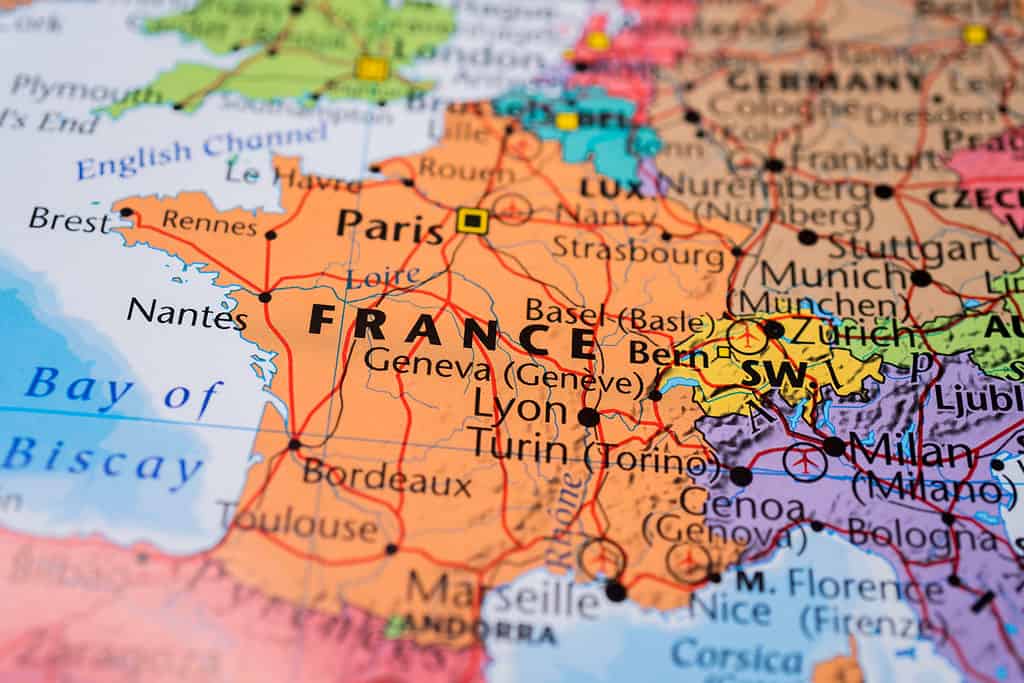
The geography of France is largely defined by its location in the northwest part of Europe. It has a total area of 248,573 square miles, making it one of the largest countries in Europe.
©Alexander Lukatskiy/Shutterstock.com
People and Culture
France is an incredibly diverse and vibrant nation with a rich culture spanning centuries. The French are renowned for their unique approach to living life, which includes enjoying delicious food and wine as part of the daily routine. From romantic bistros in Paris to traditional cheese-making farms in the countryside, France has something for everyone.
Cuisine-wise, French cooking is known throughout the world and features dishes like ratatouille, steak frites, bouillabaisse, and croque monsieur. Baguettes are a staple of most meals, while pastries such as macarons or éclairs make for scrumptious desserts. Cheese lovers will rejoice at the variety available throughout France. From sharp blue cheeses like Roquefort to creamy Brie de Meaux, there’s something for everyone! As far as drinks go, red wines from Burgundy or Beaujolais pair perfectly with many dishes, while champagne always makes celebrations special.
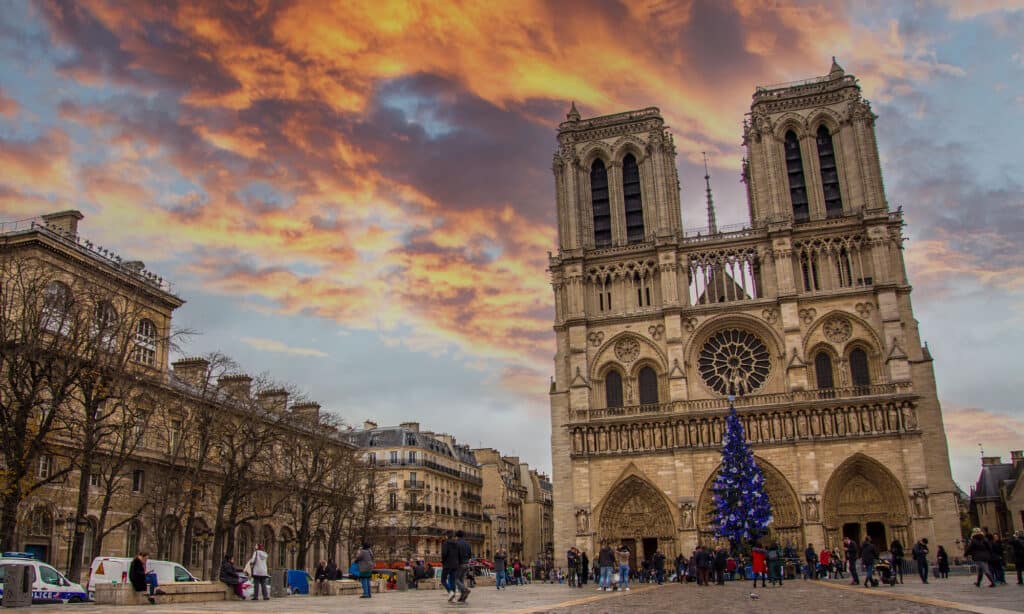
France
is an incredibly diverse and vibrant nation with a rich culture spanning centuries.
©iStock.com/Unaihuiziphotography
Native Plants
Native plants that grow wild in France include various species of trees, shrubs, and herbs. Among the most popular native tree species are Scots pine, European beech, pedunculate oak, European silver fir, and common juniper. Common shrub species found in the French countryside include gorse, heathers, and broom.
Herbaceous perennials found in France’s meadows and grasslands include wild garlic or ramsons (Allium ursinum) as well as a variety of other Allium family members, like chives and onions. Wildflowers such as cornflower and daisy fleabane are common throughout much of the country. The national flower of France is the Fleur de Lis, which blooms during late spring to mid-summer months with its delicate white petals.
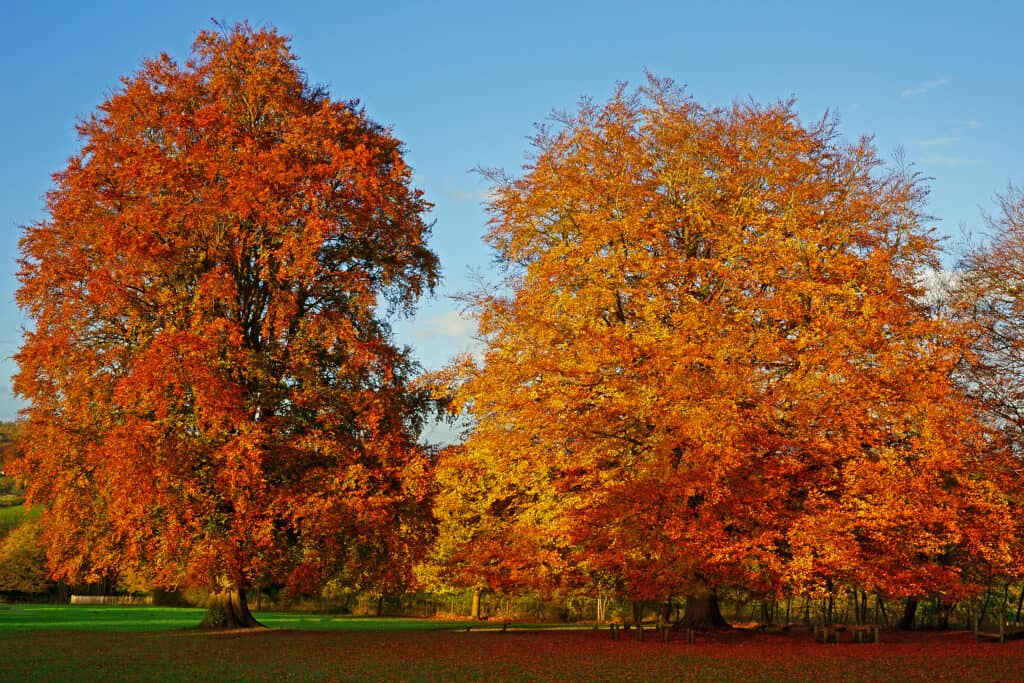
Native plants that grow wild in France include various species of trees, including European beech trees.
©PJ Photography/Shutterstock.com
National Flower
The national flower of France is the Fleur de Lis. It is an iconic symbol of French royalty and associates with French history for centuries. The original meaning behind the symbol associates with a lily or iris flower, which are symbols of purity and light.
As time progressed, the Fleur de Lis came to represent power, authority, and strength, all traits which are closely linked with France over the years. Due to its strong ties to French history, it was officially declared the National Flower of France during World War II in 1944 by Charles de Gaulle.
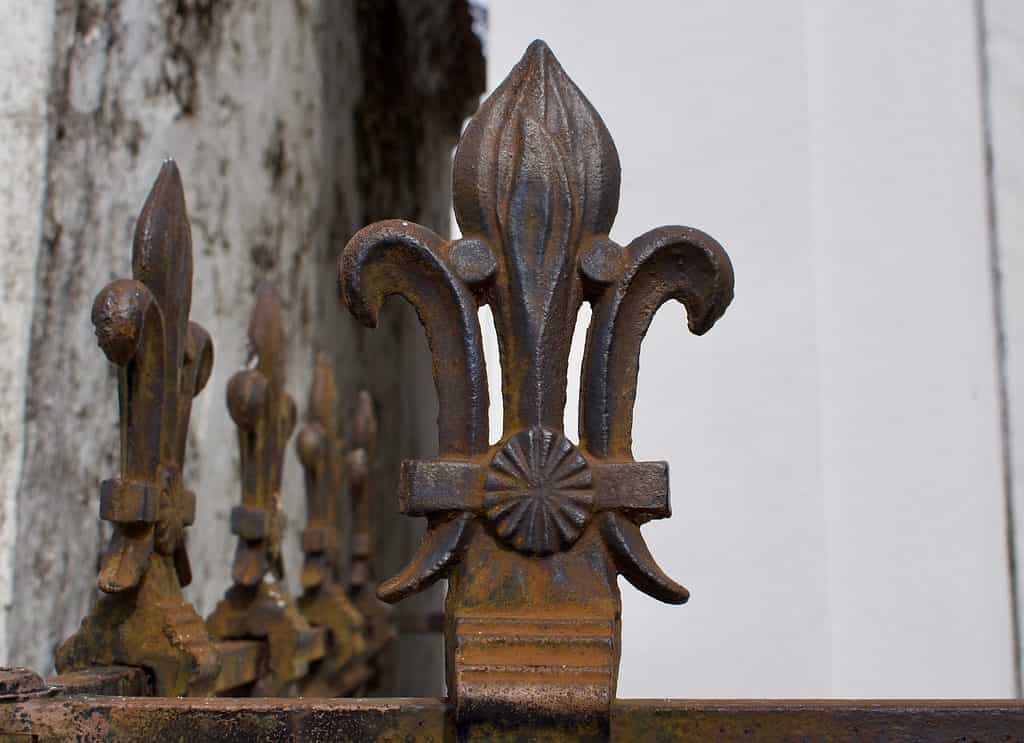
The original meaning behind the symbol associates with a lily or iris flower, which are symbols of purity and light.
©Traci L. Hardin/Shutterstock.com
What is a Fleur De Lis?
The fleur de lis is a stylized flower, which is a representation of a lily. It depicts three upright petals of a flower tied together at the bottom with a band.
It is widely associated with France, particularly during the monarchy period. If you translate it from French, fleur-de-lis means “lily” or “lily flower.” This symbol has been used in depictions of various saints, such as the Virgin Mary and Saint Joseph, two of the most prominent.
History of the Fleur De Lis
The fleur-de-lis has a long and storied history in France, having been used by the French royal family since King Clovis I first united the Franks. At his coronation, a sacred cup with a fleur-de-lis medallion was used to designate him as the new king, signifying his divine privilege to rule over his people. As such, it is often associated with royalty and nobility in French heraldry. Beyond this political connotation, however, the symbol also carries spiritual significance. Many interpret it as representing purity and light. The three petals of the flower represent faith, wisdom, and chivalry, values held dear in French culture for centuries.
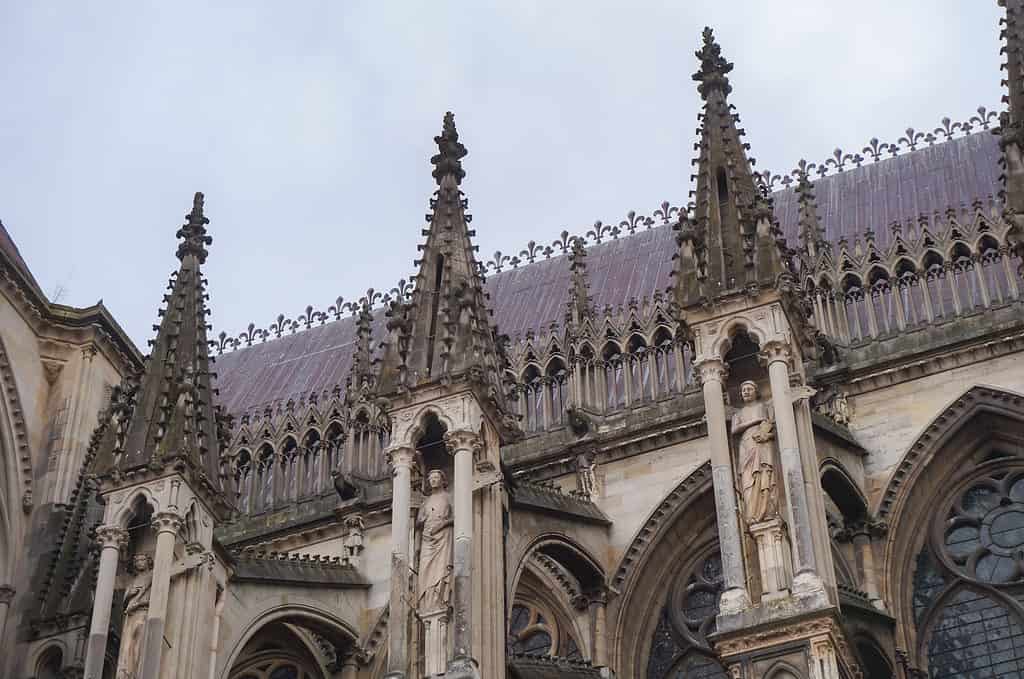
The fleur-de-lis has a long and storied history in France, having been used by the French royal family since King Clovis I first united the Franks.
©Spech/Shutterstock.com
Motto of France
The French Republic’s motto of ‘Liberté, Égalité, Fraternité’ (liberty, equality, fraternity) encapsulates the values of all citizens of France. These three words represent a belief in freedom and equality for everyone regardless of race or gender and a commitment to showing fraternity towards one another.
The French believe that each person is born with an equal right to pursue their own destiny, free from discrimination or oppression. Additionally, they strive to help others throughout their lives and show compassion for those who may be less fortunate. The motto is a reminder of the spirit of togetherness which unites all French people and represents them proudly in the international community.
History of France
Humans first moved to the area of what is now France around two million years ago. Neanderthals and Cro-Magnons inhabited the region until the Romans arrived and named it Gaul.
Julius Caesar settled Roman control over Gaul in 51 B.C.. By the year 400 A.D., Rome was declining, and the Germanic Franks, Visigoths, and Vandals all competed for power in the region. In 843, France is born with the creation of West Francia. Over the next millennium, France was ruled by a series of kings and fought many wars. Finally, in 1789, the French Revolution began, and the monarchy was finally overthrown.
Nowadays, the president of France’s election is by the people to serve as head of state and acts as a figurehead for the country. They are responsible for appointing a prime minister, also known as the head of government, who works closely with parliament in order to pass laws that govern French citizens. The current government structure combines elements from both presidential and parliamentary systems, which allows it to be responsive to changing political needs while still providing stability. This system has been in place since 1958. It was established by the Fifth Republic Constitution.
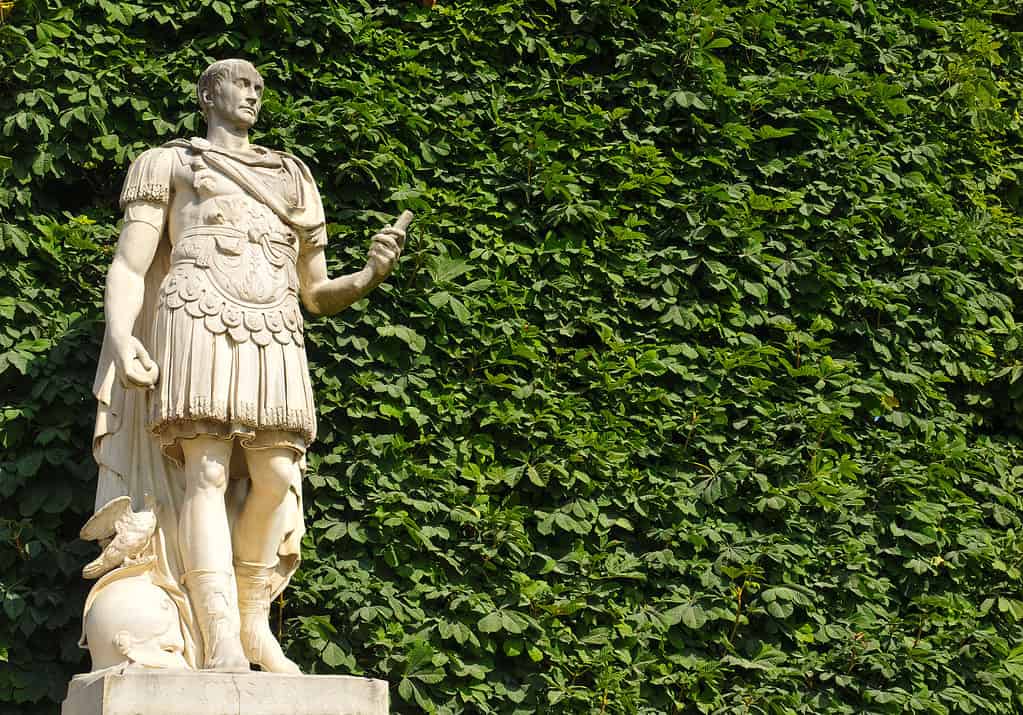
Julius Caesar settled Roman control over Gaul in 51 B.C.. By the year 400 A.D., Rome was declining, and the Germanic Franks, Visigoths, and Vandals all competed for power in the region. In 843, France is born with the creation of West Francia.
©Lucian Milasan/Shutterstock.com
Fun Facts About France
- There are 66 million people living in France.
- Paris is the largest city in France and the capital of the country.
- The famous Eiffel Tower and the Louvre museum are both in France. There are also 2,000 other museums!
- France shares a border with eight other countries.
- The currency in France is the Euro.
- Many famous fashion designers came from France, including Christian Dior and Coco Chanel.
- There are 400 types of cheese and 200 types of bread produced in France.
- Many famous artists came from France, including Claude Debussy and Claude Monet.
- The cycling race called the Tour de France takes place all over the country of France.
- A french physicist invents the metric system. Thank you, Jean-Baptiste Lamarck!
- France has more ski resorts than any other country in the world.
- Mont Blanc is the tallest mountain in France, standing 15,774 feet tall.
- The oldest city in France, Marseille, its history traces back to 600 BC!
Next Up
- The Flag of France: History, Meaning, and Symbolism. If you want to learn more about the culture and history of France, check out the French flag!
- The Gallic Rooster: Discover the National Bird of France. The bird of France has very interesting and unique symbolism.
- Discover the 12 Largest Rivers in France
The photo featured at the top of this post is © Jonathan Weiss/Shutterstock.com
FAQs (Frequently Asked Questions)
What does fleur de lis mean?
Fleur de lis means ‘lily flower; in french. It is a symbol or drawing that depicts petals facing upright and tied together at their base, most commonly gold in color.
How long has the fleur de lis been in use in France?
The fleur-de-lis has a long and storied history in France, having been used by the French royal family since King Clovis I first united the Franks.
Thank you for reading! Have some feedback for us? Contact the AZ Animals editorial team.






